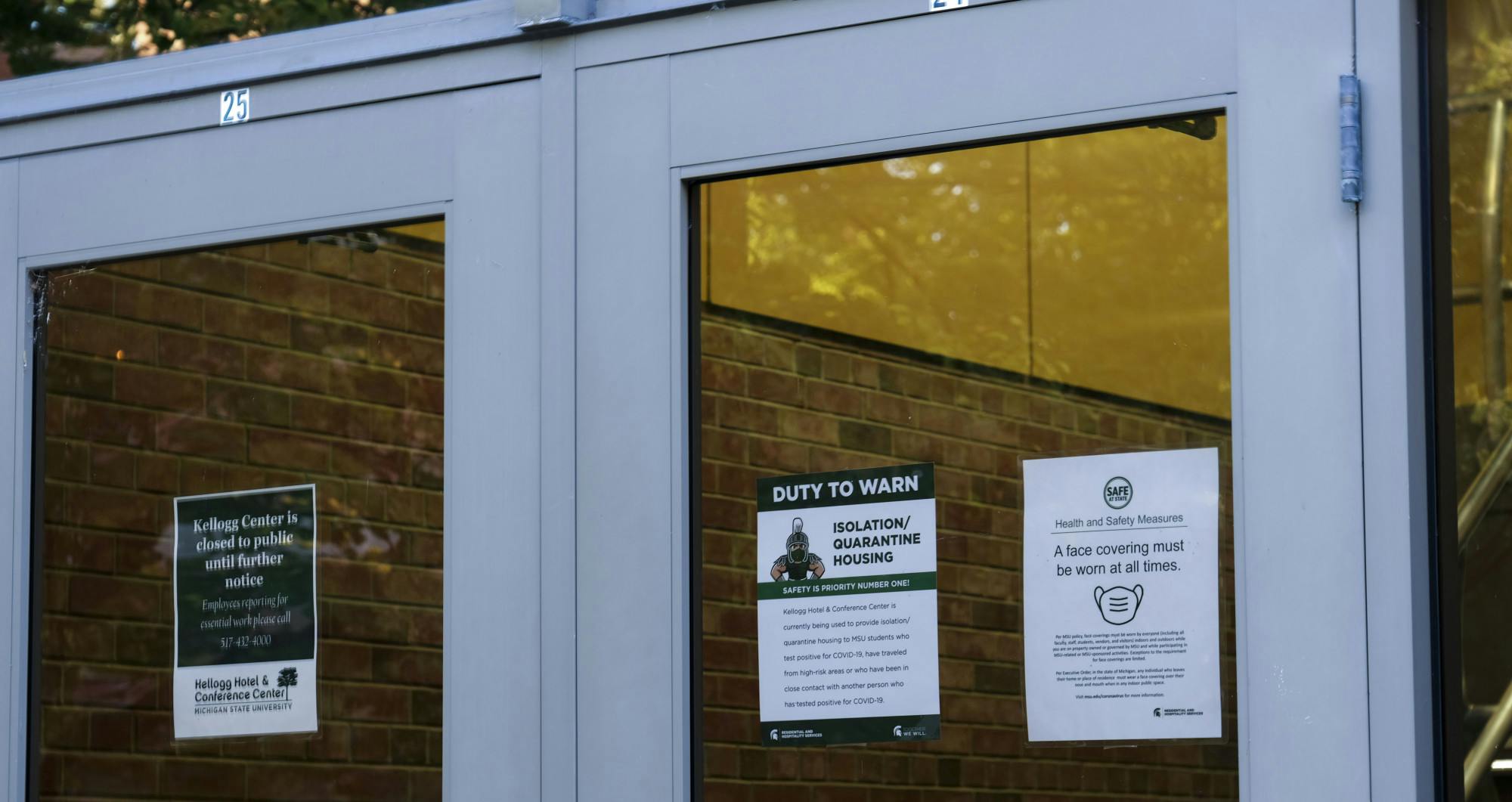With widespread community transmission and rising case counts across Ingham County, prioritizing contract tracing outreach to high-risk cases and settings is the most effective strategy for containment, Ingham County Health Officer Linda Vail said in a media briefing Tuesday.
In the past week alone, COVID-19 cases in Ingham County have risen by 1,173, daily case counts are nearly twice as high as they were a month ago and the percent of people positive for COVID-19 has more than doubled in the past month from 4% to 9%, according to a release sent Monday.
With such broad-scale transmission, Vail said the effective public health strategies just aren’t the same as what they were back in April. Rather, they need to be geared specifically toward outbreaks, clusters and the people/places that are vulnerable.
Moving forward, priority cases and situations include people over age 65; people under age 18; anyone linked to acute care, skilled nursing or long-term care facility; anyone linked to a school, including childcare facilities, K-12 schools and colleges and universities; and any time a death has occurred.
The recency of cases will also be taken into account, with cases falling within a three-day span being investigated, Vail said.
According to the release, approximately 170 new cases have been coming in daily, taxing the capacity of the health department’s communicable disease team to contact all cases and close contacts.
As of Tuesday, Ingham County totals 6,899 cases and 90 reported deaths. County hospitalizations in Sparrow and McLaren health facilities reported 156 confirmed and suspected cases. Of those, 15 are in the intensive care unit and 16 are ventilated.
In the past week, county data shows two days where daily case counts have exceeded 200 incidents. On Nov. 12, data to date shows 242 cases on that date alone.
“We could add enough staff to be able to call all 250 people every day and to be able to get ahold of their contacts on a regular basis and it still would not contain widespread community transmission,” Vail said.
In order to effectively mitigate the virus, Vail said there is a personal responsibility on community members to play a role. Among this, isolating at the onset of symptoms and reaching out to close contacts is a responsibility anyone can take on.
Close contact may be defined as any individual with whom one was maskless and/or within six-feet of for a period of 15 minutes or longer, Vail said. Upon testing positive, these individuals should be notified and told to quarantine for 14 days from the last contact, regardless of symptoms or test results.
“Unfortunately, COVID-19 is everywhere,” Vail said in the release. “COVID-19 is now widespread in the community. The public health strategies of identifying, investigating and contact tracing are effective for outbreaks and clusters, but not effective nor feasible for widespread community transmission. Our focus will now be on minimizing the spread and severity of the virus in high-risk cases and situations. With basic information that we will provide, most people who test positive can implement their own isolation and notify close contacts themselves.”
While outbreaks associated to Michigan State University were a concern as students returned to campus in late August and early September, Vail said current numbers simply show a consistency with the community spread.
Effective Wednesday, a new order from the Michigan Department of Health and Human Services (MDHHS) will close indoor dining at bars and restaurants, in-person learning for high schools, colleges and universities and other indoor recreational activities for a three-week period.
Vail said while the epidemic order may never be as broad as the executive orders had been due to specifications of the public health code, the MDHHS order was more targeted toward more problematic situations.
An article out the Chicago Tribune, Vail said, showed nearly 50% of the positive tests were from individuals who had reported dining indoors at bars and restaurants.
“It’s unfortunate. We don’t want to see any of our businesses having to struggle again, so hopefully, this kind of surgical precise thing with a limited time period gets us to a point where we kind of plateau here and start to get things in a different direction,” Vail said.
Likewise, the order left open places which have not presented any concerns thus far, including gyms and salons, Vail said. The goal at the end of the three weeks is to at least see the curve start to come down, so that future revisions do not need to be made.
“The bottom line becomes we’ve got a handful of things that we ask people to do and to some people, it feels like a sacrifice, to others not so much,” Vail said. “If we could get really good, solid adherence across the board by people in general just deciding to do the right thing, then we wouldn’t have cases soaring and we wouldn’t have to issue orders.”
With Tuesday night being the last night of open bars, Vail emphasized that capacity restrictions, masks, and congregation guidelines are still in place.
Support student media!
Please consider donating to The State News and help fund the future of journalism.
Anyone who sees an activity not permitted under the epidemic order may reach out to the department at coronavirus@ingham.org to issue a complaint.
Discussion
Share and discuss “Widespread community transmission prompts changes to COVID-19 case investigation” on social media.







